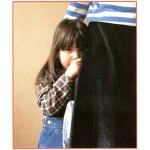
Hands are the instrument for all man’s work, which are of various kinds. Some require skill, others don’t. Some one degree of it, some another. Handicrafts is skilled work; one that expresses the measure of a person’s creativity in physical shape. It is the creation of form and beauty where none or very little existed. And it is mostly work done by an individual rather than a collection of people. It is what one person working in his leisure creates virtually by himself.
Handicrafts have always, since the dawn of civilization, had importance in daily living. The ability to make things that looked good out of a handful of earth or twigs was a skill to be envied. Those who could do that had an advantage over those who could not. Before the machine age, hands created things both for utility and beauty. The early man-made implements to hunt, and pottery to store water and food. But he also made ornaments of a kind to bedeck himself and his surroundings. The Sumerians and the Indus civilizations are rich in traces of these. The former category of goods were, however, later overtaken by better and better ones made by machines. Since the purpose was utility, machines won as they were able to make more useful things at greater speed.
Even in the creation of beauty, machines have made inroads – in the weaving of carpets for instance, in the making of ornaments, in the manufacturing of decorative pieces. But mercifully, human civilizations have had the sanity, so far, to stop short of making aesthetic and manual skills an obsolescence. Partly this was because it could not altogether do without those skills. The Waterford Glass factory of Ireland, though wholly modern, still has to make crystal by an age-old process, blown by mouth and cut by hand. The camera might have gone instamatic and automatic but for the right composition and feeling, it still needs a human hand to press the lever.
Secondly, man’s concept of beauty tires of sameness. It seeks uniqueness instead. Assembly line production, no matter how finely finished, ceases to be beautiful after a while. The coarse rather than the smooth then becomes the measure of beauty. While surveying God’s Garden, you see thousands of flowers of various colours speaking different languages radiating an individual significance and at the same time, blending so happily together.




